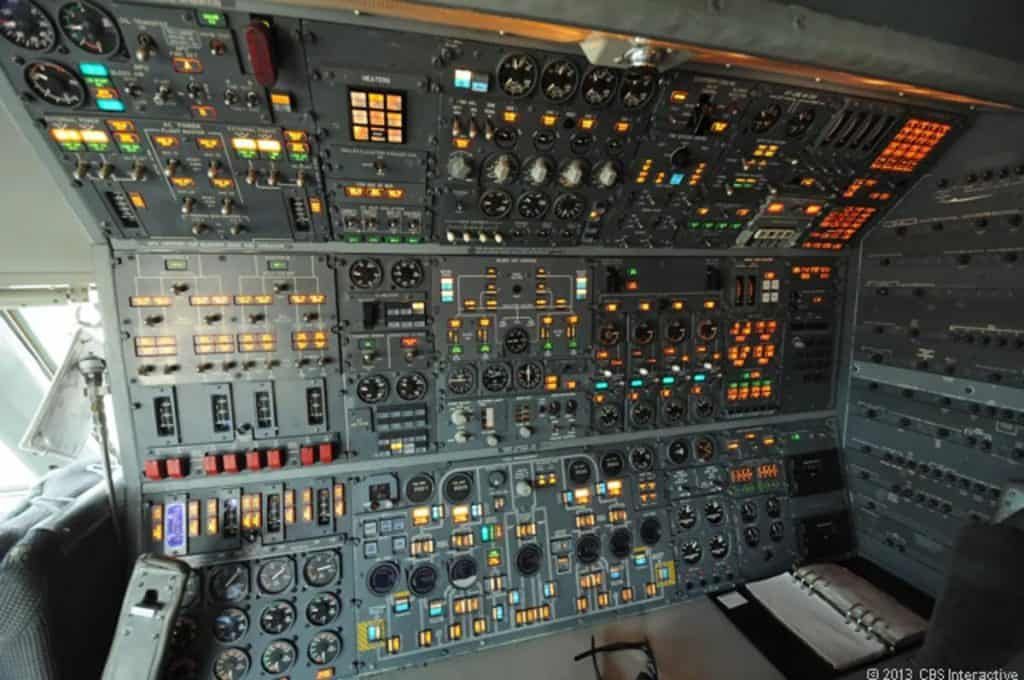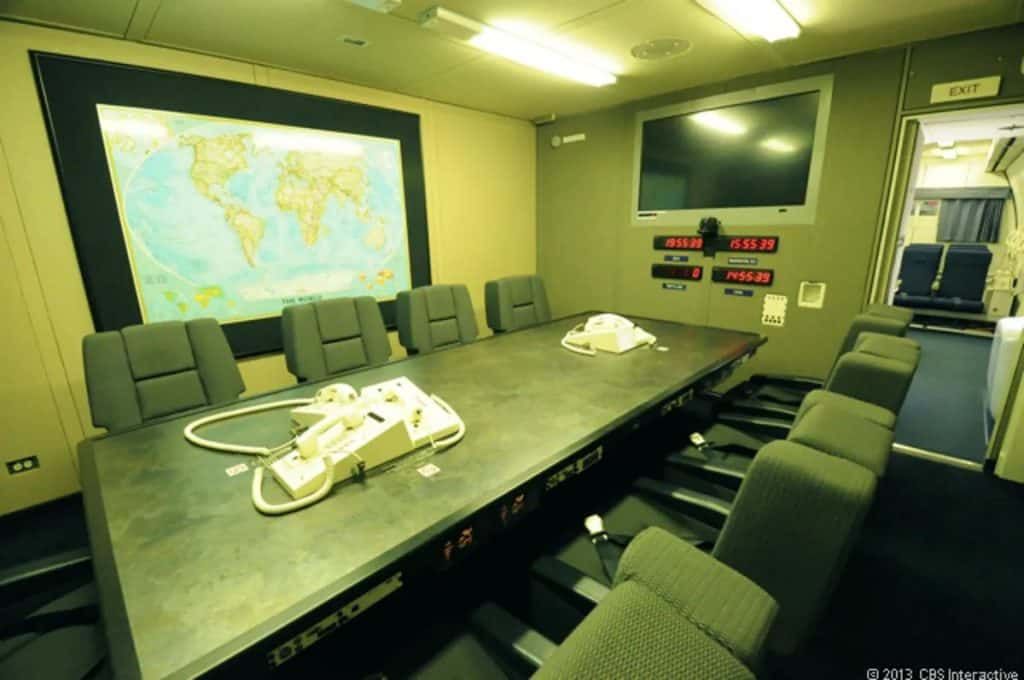The tensions and wars that have been happening in the world have brought to light a subject that is not so debated, the use of a “doomsday” plane. The aircraft, also known as Doomsday planes or Doomsday planes, have already been spotted, according to reports. But after all, what is a plane of this type and when is it used?
Doomsday planes are highly resilient military aircraft designed to operate in extreme conditions, including falling nuclear radiation and electromagnetic pulses that could disrupt electronic communications.
Read more:
They are armored and equipped with redundant systems to ensure the survival and continuity of government operations in the event of a catastrophic event. They are built to remain in the air for days without needing to be refueled.
The doomsday planes are known in the military as E-4B and are a militarized version of the Boeing 747-200. They serve as the National Air Operations Center for the President, Secretary of Defense, and Chairman of the Joint Chiefs of Staff.
Doomsday planes are an unofficial designation for a class of aircraft that are used as an aerial command post in the event of nuclear war, disaster, or other large-scale conflict that threatens critical military and government infrastructure. The only countries known to have designed and manufactured similar aircraft are the United States and Russia and, therefore, they are a legacy of the Cold War.
The Air Force’s doomsday fleet, consisting of just four aircraft, was designed to give senior U.S. leaders an aerial command post to control forces in the event of a national emergency or crisis.
What does an E-4B look like inside?
The Boeing E-4B Nighwatch, also known as the “Doomsday” or “Doomsday” plane, is a militarized version of a highly modified Boeing 747-200 jumbo jet from the 1970s. It was designed to serve as a aerial command post in the event of a nuclear war, being capable of resisting electromagnetic explosions, radiation and thermal shocks.
The E-4B has four engines and is divided into six functional areas: Command Work Area, Conference Room, Briefing Room, Operations Team Work Area, Communications Area, and Rest Area.
The interior of the E-4B Nightwatch houses a network of specialized rooms and areas designed to accommodate up to 112 people. Divided into three levels and six distinct sections, the aircraft has command work areas, soundproofed conference rooms equipped with video screens, rest areas with bunk beds and large armchairs, as well as spaces dedicated to communication and technical control.

Equipped with traditional analog flight instruments, the E-4B Nightwatch ensures continuous operability even in extreme conditions, protecting the integrity of its critical functions.
The United States Air Force has four E-4B “Doomsday” planes, with at least one always on alert. The planes are operated by the 1st Airborne Command and Control Squadron of the 595th Command and Control Group at Offutt Air Force Base, Nebraska.
The E-4B is 231 feet, 4 inches long, has a wingspan of 195 feet, 8 inches, and a height of 63 feet, 5 inches. It has four General Electric CF6-50E2 turbofan engines, each with 52,500 pounds of thrust. The plane is highly durable and can remain in the air for more than 150 hours with aerial refueling.






In July 2022, Brazilians had the opportunity to see the Boeing E-4B when it landed at Brasília Airport. The E-4B is expected to reach the end of its service life in the early 2030s. See the E-4B inside video here.
Datasheet
- Main function: Airborne Operations Center
- Constructor: Boeing Aerospace Co.
- Propulsion: Four General Electric CF6-50E2 turbofan engines
- Buoyancy: 52,500 pounds each engine
- Length: 70.5 meters
- Wingspan: 59.7 meters
- Height: 19.3 meters
- Maximum takeoff weight: 800,000 pounds (360,000 kg)
- Resistance: 12 hours (without refueling)
- Roof: above 30,000 feet (9,091 meters)
- Unit cost: $223.2 million
- Occupants: up to 112
- Implementation date: January 1980
- Inventory: active force, 4 units
What does an Ilyushin Il-80 Maxdome look like inside?

The Ilyushin Il-80 Maxdome is a highly specialized Russian aircraft, developed from the Il-86 civil transport aircraft, and used as the Russian president’s air command post in the event of a nuclear attack. The Russian “Doomsday” plane has two electric cockpits mounted inside the engine nacelles (space in an aircraft to house a specific structure, such as an engine), each about 9.5 meters (32 feet) long and 1.3 meters (4 feet) in diameter, and both include landing lights.
The plane also has a SATCOM dorsal canoe, believed to contain advanced satellite communications equipment, and a trailing wire antenna mounted on the bottom of the aft fuselage for transmitting and receiving very low frequency (VLF) radio, probably for communication with ballistic missile submarines.

It was also known by NATO as Maxdome, and occasionally referred to as the “flying Kremlin”. It is believed to have entered service in 1987, although Western photographers first captured images of the aircraft in 1992.
The Russian Aerospace Forces’ four Il-80s were developed from the II-86, a wide-body passenger quadjet developed under the Soviet Union during the 1970s. The Il-80 Maxdome has an unusual barrier that blocks the windows of the Russian Aerospace Forces. rear cockpit, which can serve to block EMP or RF pulses.
According to Russian media, the current fleet of Il-80s will not receive further upgrades before they are retired. The Ilyushin Il-96, which was the successor to the Il-86, is expected to serve as the basis for the country’s next generation of “doomsday” planes. See video about the Ilyushin Il-80 here.
Datasheet
- Main function: Air command post
- Country of origin: Russia (former Soviet Union)
- Manufacturer: Ilyushin
- Quantity produced: 4
- Developed from the Ilyushin II-86
- First flight: March 5, 1987
Other countries, such as China and the United Kingdom, also operate similar aircraft designed to provide continuity to government and command and control capabilities during national emergencies.
Fortunately, doomsday planes are rarely used, yet they play a crucial role in ensuring the resilience and survivability of government operations in the face of catastrophic events.
















